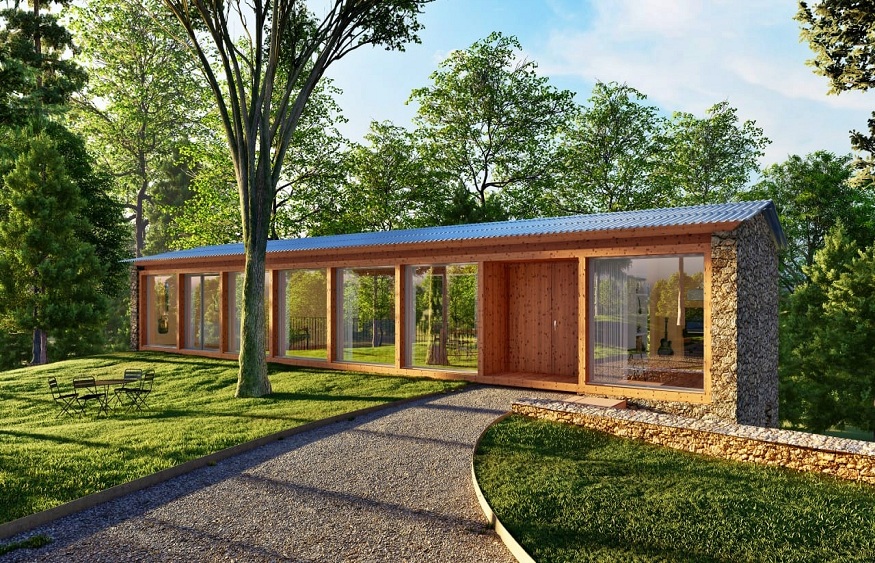
When you think of a home, what comes to mind? Most people envision a beautiful place to live that’s comfy and cozy. But did you know there are many eco-friendly aspects to rendering? Let’s take a look at why it’s such an environmentally friendly material for homes, as well as its benefits.
What is rendering?
Rendering is a mixture of cement and sand that is used to cover exterior walls. It’s typically applied to brick or block walls, although some people use it on stucco as well. The process involves adding color and texture to the wall surface, which gives it a polished look that lasts for years. It also helps protect the bricks underneath from rain and wind erosion, so they last longer than if they were left untreated.
Eco-friendly aspects of rendering for homes
Durability: The main reason why people use render is because it is one of the most durable building materials available on the market today. Not only does it protect against water penetration, but it also protects against termites and other insects that cause damage to your home.
Cost Effective: At first glance, you might think that rendering is an expensive material that will cost you a lot of money to install on your house. However, once you get into doing research on this subject, you will realize that it actually costs less than other types of cladding materials such as brick or stone veneer because it requires fewer coats and takes less time to install.
Natural insulation
As you may have guessed, rendering is a great insulating material. It works by trapping air between the render and your home’s exterior wall, which keeps heat from escaping during winter months and helps keep cool air inside during summer months. This means that less energy needs to be used on heating or cooling your home, saving money in both areas!
Rendering comes in many different forms: cement-based renders are popular because they’re easy to clean (just wash them off with water) and last longer than other types of render; lime-based renders are also available but require more maintenance; clay renders tend not to need any upkeep at all since they’re naturally self-sealing; fiberglass insulation boards can be attached directly over existing brickwork without requiring any additional preparation work beforehand.
The exact amount of insulation needed depends upon where you live and what type(s) of thermal properties best suit your needs: if you live somewhere cold where temperatures regularly drop below freezing point then more insulation will be required than someone living somewhere warm where temperatures never go below 70 degrees Fahrenheit during winter months (and vice versa).
A lightweight material that is easy to work with
Rendering is a lightweight material that is easy to work with, which makes it ideal for use on homes. It can be cut, shaped and fitted with ease, making it perfect for those who are not skilled in carpentry or construction work. It also applies easily over the frame of your home and can be painted or stained to match the rest of your house’s exterior.
It helps with insulation
Rendering can help with insulation in many ways. First, if you use render to cover the outside walls of your house, it will provide an extra layer of protection for the insulation inside. This helps to prevent heat loss during winter months and also prevents excess heat from getting into the building during summer months.
It protects against moisture damage
Second, rendering protects against moisture damage from rain and snow by acting as a barrier between the elements and your walls. This helps to keep moisture from getting into cracks and joints that could cause serious structural damage over time if left untreated. It also makes it easier for you to clean up any water or dirt that does get onto your walls during inclement weather because it’s easy enough to remove dried out mud from concrete or brick surfaces!
Soundproofing and sound isolation
Another great benefit of rendering is its ability to help with soundproofing and noise reduction. This is because it’s a thick, dense material that can be used to create an effective barrier between rooms and floors.
The best way to use render if you’re looking for soundproofing is by laying it over existing walls or ceilings in your home. If there are cracks or gaps between the boards which make up these surfaces, then this can easily be filled by using filler first – such as expanding foam – before applying render over them. This will create an airtight seal which will prevent any unwanted noises from getting through into other areas of your property while also stopping any heat loss through those same gaps!
No harsh chemicals used
In the construction of your home, you can be sure that there are no harsh chemicals used in the production process. The material is made from renewable resources and is safe for you and your family to live in.
Find a proven rendering company
If you are planning to build a home, you will need a lot of services. The most important service is the rendering company that will provide the right design and make it happen. In order to make sure that you get the right one, you need to look at their credentials and experience.
Rendering is an art that requires expertise and knowledge in order to achieve perfection in design. This is why it is important for you to find a proven rendering company, such as Hi Cement Rendering that has been around for many years and has been providing high quality services for their clients.
Renewable resources used for production
The rendering process is done using a mixture of clay, sand and straw. While the clay is not a renewable resource, it’s far more sustainable than many other construction materials available today. In fact, we recommend using only natural clays that don’t contain any chemicals or additives (such as lime).
Straw is another great option for homes looking to go green with their building materials–it’s an agricultural byproduct that can be easily collected on site or purchased in bulk from local farmers who have excess supply after harvest time each year.
Finally: sand! Sand doesn’t seem like much at first glance but this particular type actually has some pretty cool benefits when used during construction projects.
We hope you’ve enjoyed learning about the many eco-friendly aspects of rendering. This is a great material to use on your home, and we encourage you to consider it as an option when deciding how to remodel or build a new home.
